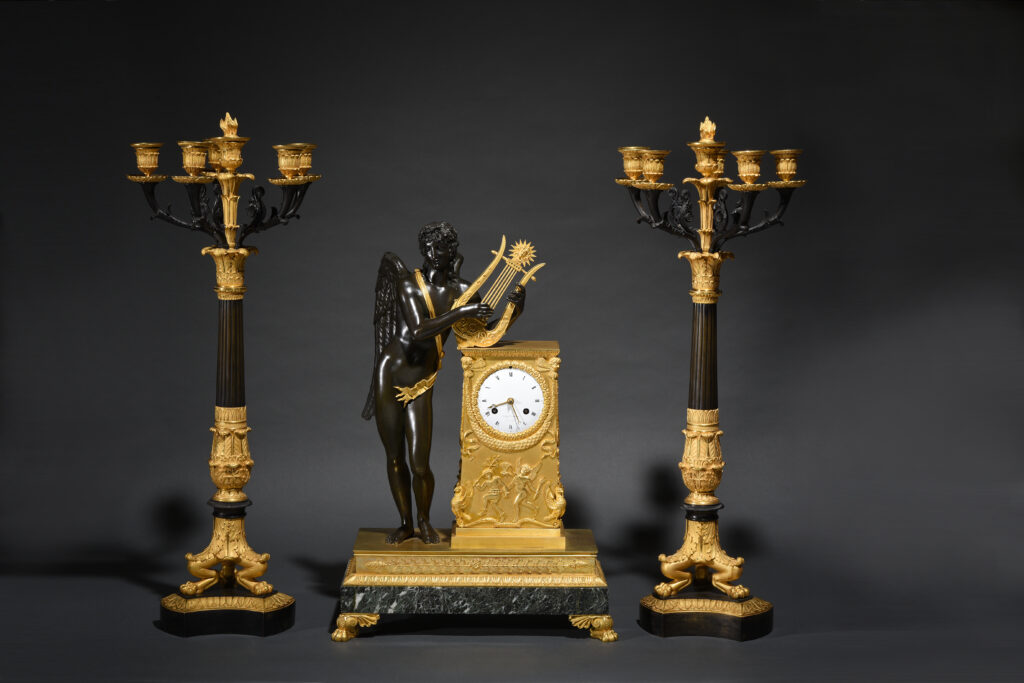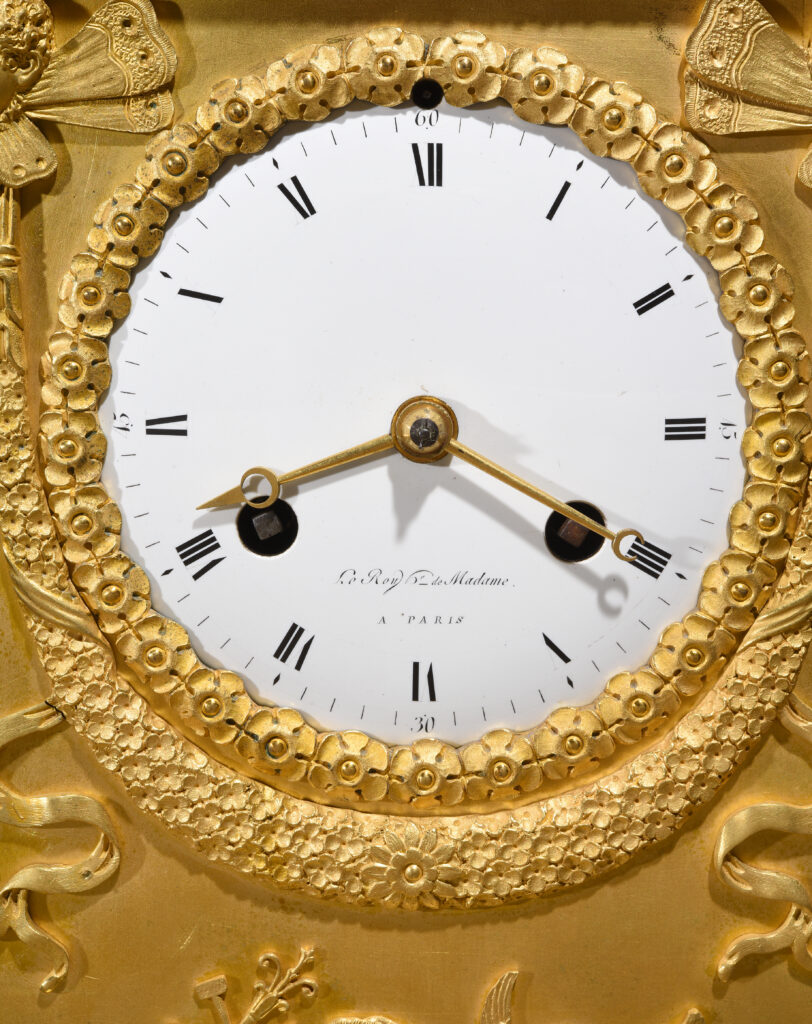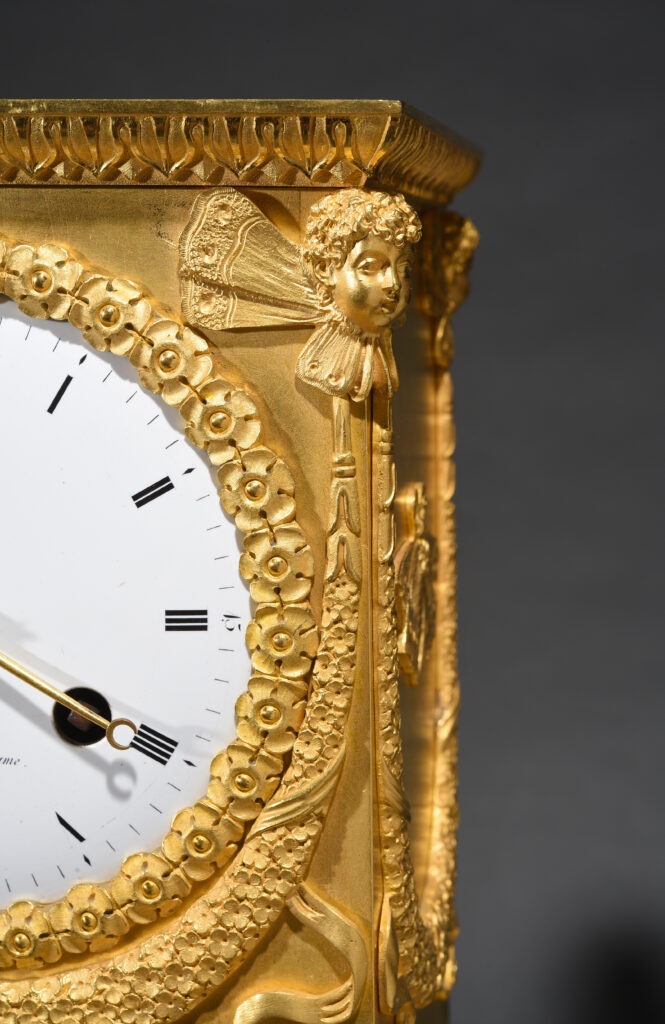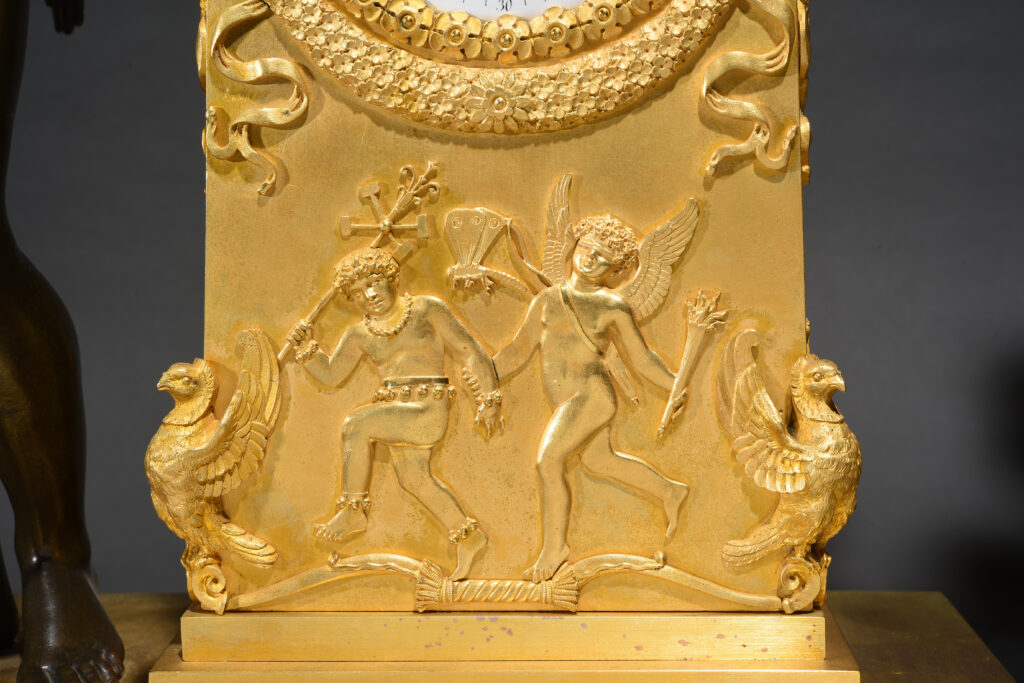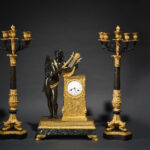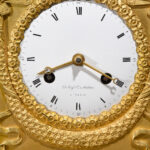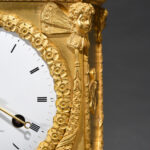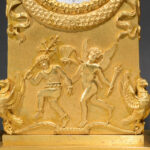Apollo Empire clock circa 1810
Pendulum clock credited to Pierre-Philippe Thomire (1751-1843), the enamelled dial with Roman numerals is by Le Roy, the watchmaker for Madame in Paris.
Basile Charles Le Roy (1765-1828)
The Le Roy name is linked to one of the most important Parisian watchmaker dynasties of the 18th and 19th centuries. Basile Le Roy was the original watchmaker, but it was his son, Basile-Charles, who was the true founder. He became a master-watchmaker in 1785. In the same year, he set up a workshop under the arcades of the Royal Palace which remained in the family for over a century.
With his innovative approach, Basile-Charles was very active, exhibiting at international exhibitions and filing patents. He secured collaborations to produce his clocks’ casings with some of the best Parisian craftsmen and in particular, bronze sculptors including Rémond, Thomire, Galle and Reiche.
He had an exceptional career and became the watchmaker for Her Imperial and Royal Highness Mother, for the Emperor, the King of Westphalia, Her Imperial Highness Princess Pauline and was the honorary watchmaker for King Louis XVIII during the Restoration period and the Garde-Meuble de la Couronne.
Nowadays, this renowned watchmaker’s clocks are part of some of the most significant international private and public collections, especially those preserved in the Musée du Louvre and the Ministère de la Guerre in Paris, the Musée Paul Dupuy in Toulouse, the Musées Royaux d’Art et d’Histoire in Brussels and the Musée International d’Horlogerie in La Chaux-de-Fonds.
Pierre-Philippe Thomire (1751-1843)
This bronze sculptor was one of the most remarkable in his field at that time. A pupil of Houdon with outstanding talent, he was destined to be a sculptor but abandoned his plan due to lack of money, (the art of statues required financial means that he just didn’t have.) He joined the studio of Pierre Gouthière, a bronze sculptor and carver, where he quickly learned the tricks and techniques of the trade. After the company went bankrupt, in 1776, Thomire set up his own business and gradually established himself as the most famous engraver of his generation.
From royal orders to imperial supplies, his workshop developed at such a rate that it employed up to seven hundred people. It elevated its craftsmanship to become an industry renowned throughout Europe and the United States, thanks its level of French quality par excellence during the Empire period.
A clock similar to ours was delivered to the Garde-Meuble by the watchmaker Bailly on 30th December, 1810 (branded Inventaire de Compiègne, CP couronné). It had resided in the Duchess de Bassano’s apartment living room, then in the round living room of the Duke and Duchess de Berry’s apartment in the Compiègne Chateau during the Restoration period. This apartment later became home to Prince Jérôme during the second Empire.
Another clock, the Apollon by Thomire & Co. and the watchmaker, Moinet Aîné, is in gilt bronze. It is on display in the celebrated Molly de Balkany collection released in May 2017.

